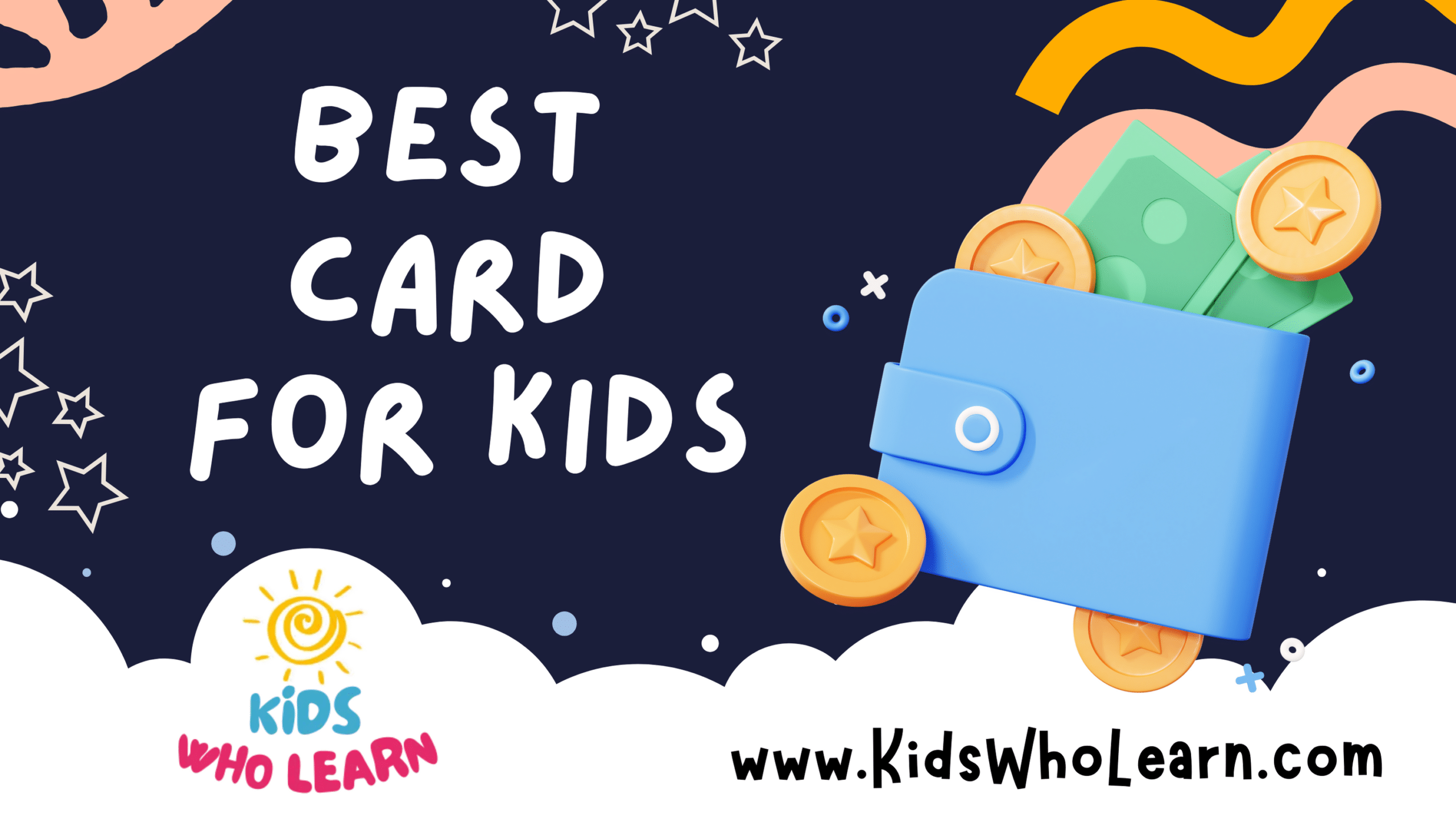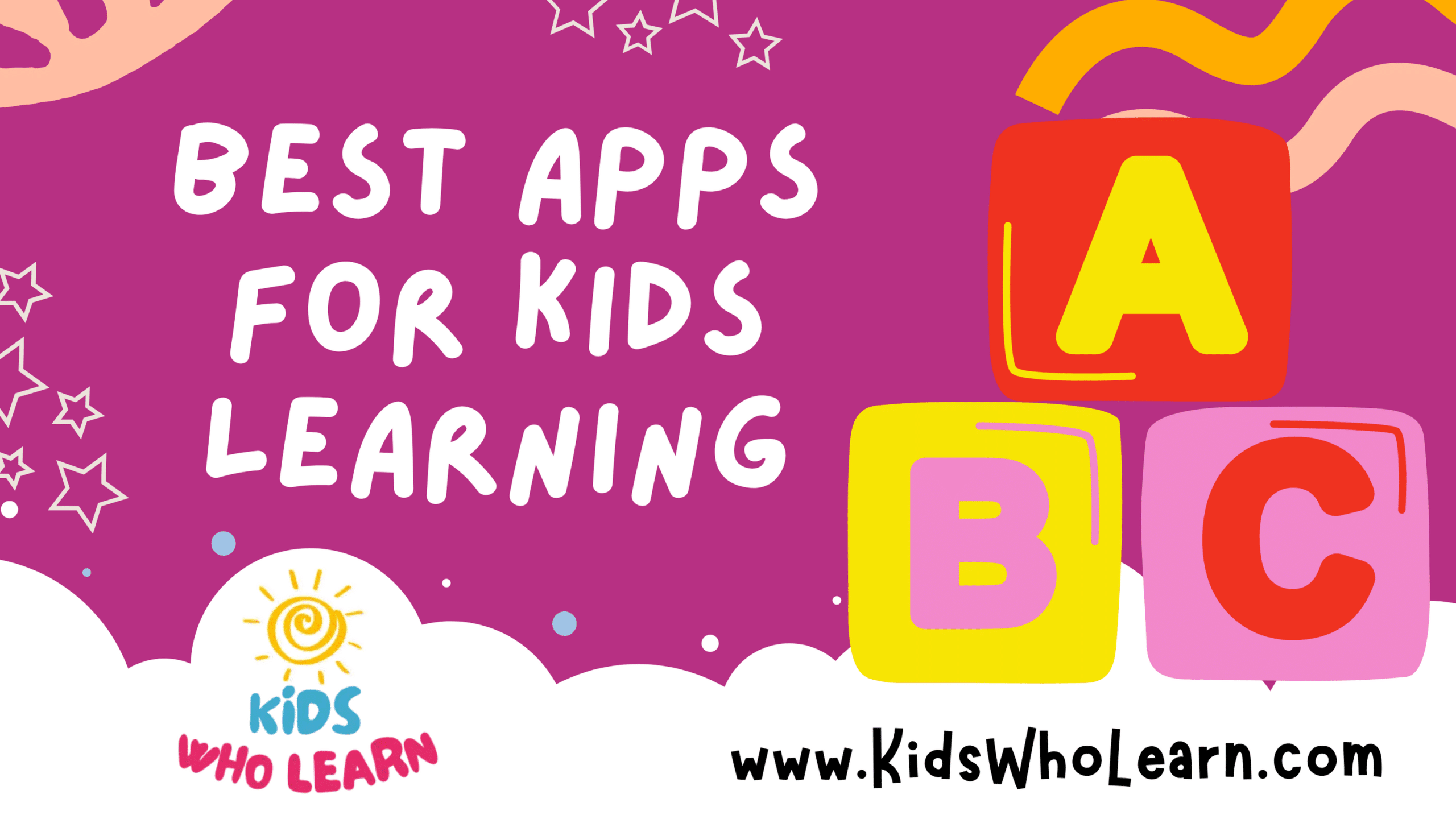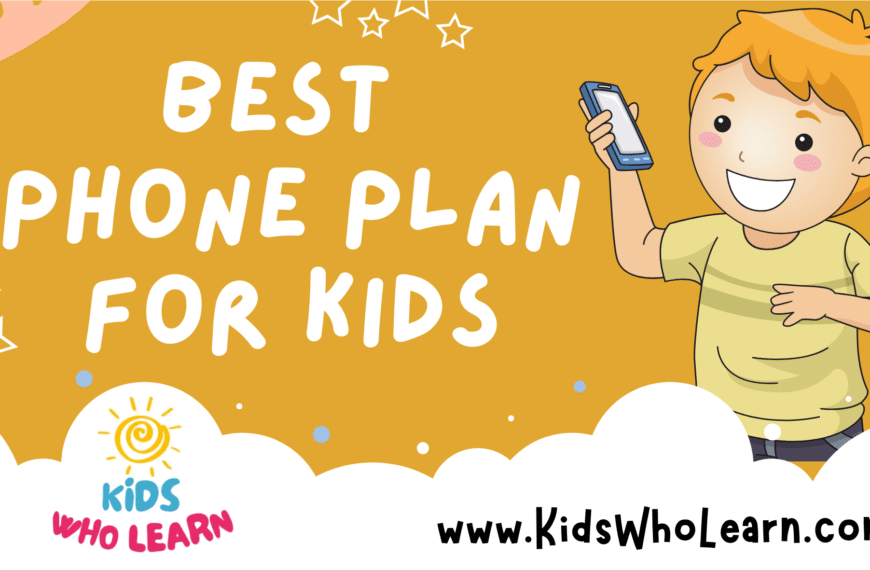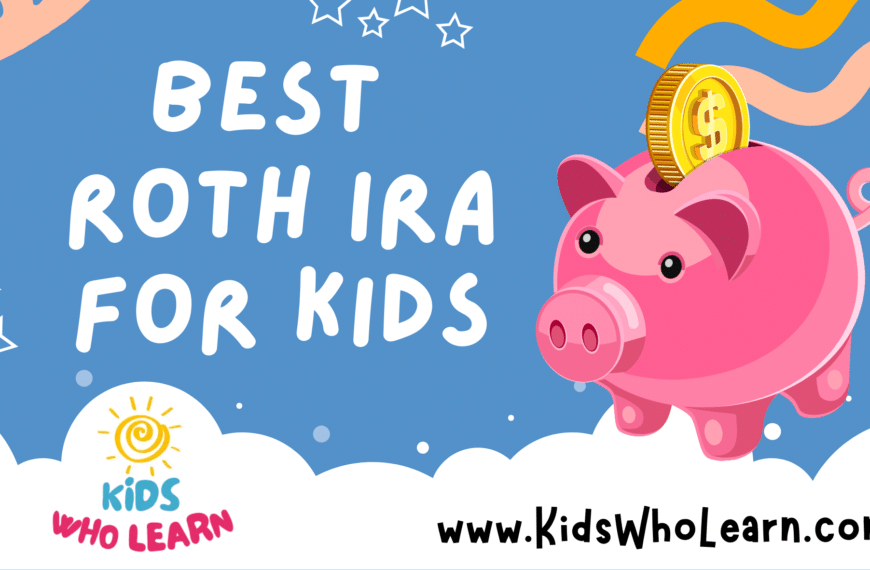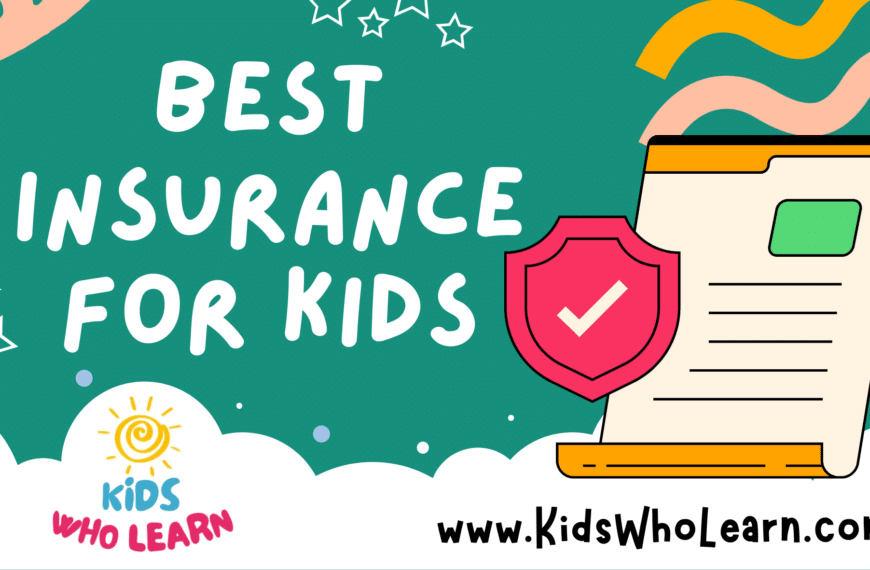In an age where financial literacy is as imperative as academic knowledge, equipping children with the right financial tools is key. Choosing the best card for kids is more than just a matter of convenience; it’s about setting the stage for smart money management skills that will serve them for life. Debit cards for kids have emerged as a safe and practical way to introduce the concepts of earning, saving, and spending.
While the idea of giving a child a debit card might raise some eyebrows, today’s options are designed with parental oversight in mind. These cards allow parents to monitor and control their child’s spending habits while providing an opportunity for kids to learn about managing their finances responsibly. Accessibility, convenience, and educational resources are among the many features these cards offer, but selecting the right card requires an understanding of fees, security measures, and the educational value it can provide to the young user.
Key Takeaways
- Selecting the right card for kids focuses on instilling responsible financial habits and skills for the future.
- Parental control features and security measures are crucial aspects of children’s debit cards.
- It’s important to assess accessibility, convenience, and user experience when choosing a card.
Understanding the Basics of Debit Cards for Kids
Debit cards designed for children provide them with a practical way to learn money management skills. These cards come with various features tailored to different age groups.
What Are Debit Cards for Kids?
Debit cards for kids are financial tools that function like regular debit cards but are specifically intended for a younger audience. They often have parental controls that allow you to monitor and limit your child’s spending. These cards are typically linked to a bank account or a preloaded balance. The age requirement to obtain a debit card for kids can vary, but they are generally suitable for children under 18 years old.
- Age Restrictions: Usually, children aged 6 to 18 can use these cards.
- Parental Controls: You can set spending limits and track transactions.
- Linked Account: Often associated with a parent’s or a standalone child’s bank account.
Benefits of Using Debit Cards
Using debit cards can teach children the importance of budgeting and how to handle money responsibly. Here are key benefits associated with debit cards for kids:
- Financial Literacy: Learn to manage funds and understand transactions.
- Security: Safer than carrying cash; if lost, the card can be easily blocked.
- Convenience: Accepted widely for various transactions, both online and in-store.
- Control: Parents can monitor spending and set limits to encourage good spending habits.
| Benefit | Description |
|---|---|
| Financial Education | Teaches budgeting, saving, and the impact of spending. |
| Safety | Limits the risk of losing money; offers fraud protection. |
| Spending Tracking | Allows parents to see where and how money is being spent. |
| Autonomy | Gives children a sense of independence with oversight. |
Choosing the Right Card
When selecting a card for your children, it’s crucial to prioritize features that align with both their needs and your ability to monitor their spending habits.
Factors to Consider
When evaluating debit cards for kids and teens, you should consider their security features, parental controls, and the fee structure. For security, look for cards offering real-time notifications on transactions, the ability to freeze and unfreeze the card, and FDIC insurance. Parental controls are essential as they allow you to set spending limits, monitor activity, and in some cases, restrict the type of merchants where the card can be used. With regard to fees, aim to find options that have no fees or low fees. This could include no monthly fees, minimal ATM fees, and ideally, no overdraft fees to prevent unexpected charges.
Comparing Debit Cards for Kids
| Feature | Card A | Card B | Card C |
|---|---|---|---|
| Monthly Fees | No fees | Low fees | No fees |
| ATM Fees | No fees at network ATMs | $2 outside network | One free ATM withdrawal/month |
| Overdraft Fees | None | None | None |
| Security | Real-time alerts | Freeze/unfreeze option | FDIC insured |
| Parental Control | Spending limits, merchant restrictions | Monitor activity, set allowances | Spending limits, real-time notifications |
In comparing debit cards for kids and teens, Card A offers the best combination of no fees and comprehensive parental controls, but Card B’s and Card C’s features might be more suitable depending on your circumstances. Your decision should balance cost-effectiveness with the level of oversight and freedom you want to grant.
Financial Education for Children
Instilling financial literacy in children from an early age sets the foundation for responsible money management as they grow. It’s important to equip kids with the skills to budget and save effectively.
Teaching Money Management
Financial literacy is crucial for children’s future independence. You can start by opening a savings account in their name, where they can watch their money grow. Introduce the concept of interest on savings to explain how money can increase over time with an Annual Percentage Yield (APY). By visualizing their money’s growth, children can more tangibly grasp the benefits of saving.
Budgeting and Saving Techniques
Teaching your child how to create and maintain a budget is fundamental. Start with having them list their income sources, like allowances, and expenses, such as toy purchases. Budgeting involves distinguishing between wants and needs, encouraging critical thinking about spending.
- Example Budget for a Child:
- Income:
- Allowance: $10/week
- Birthday Money: $50/year
- Expenses:
- Savings: $5/week
- Entertainment: $2/week
- Charity: $1/week
- Miscellaneous: $2/week
- Income:
Set specific saving goals with your child for items they wish to purchase. This illustrates the value of patience and planning in achieving goals. Reinforce the habit of regularly depositing a portion of their income into their savings accounts to build up their reserves.
Managing Finances
Inculcating financial responsibility in kids is crucial, and choosing the right card can play a significant role by providing controllable spending boundaries and tangible allowance incentives.
Setting Spending Limits
Your child’s card should offer you the ability to set specific spending limits. This control helps prevent overspending and teaches your child the value of money. For instance:
- Daily Spending Limit: $20
- Online Purchases Limit: $50 per month
- ATM Withdrawal Limit: $10 weekly
These limits can be adjusted as your child grows and their understanding of financial management evolves.
Using Allowances as Learning Tools
Allowances are more than just money given; they are a critical educational tool. Tie allowances to chores to help children understand the work-reward relationship:
- Vacuuming the house: $5
- Washing the car: $10
- Completing homework on time: $2 bonus
Additionally, encourage your children to save a portion of their allowance. By doing so, they’ll learn the importance of saving and financial planning.
Account Features and Benefits
When evaluating cards for kids, it’s essential to consider the specific features and benefits that cater to their financial growth. Accounts designed for kids offer unique advantages that support saving habits and provide reward systems for smart spending.
Interest and Savings Incentives
- High-Interest Rates: Accounts for kids often feature higher interest rates compared to standard savings accounts, which can help your child’s savings grow faster.
- Savings Goals: Many accounts offer tools to set and track savings goals, reinforcing the importance of saving for future needs.
With these incentives, you encourage your child to save diligently, helping them understand the value of their money over time.
Cash Back and Rewards Options
- Cash Back on Purchases: Some cards offer cash back on eligible purchases, which can be a practical reward for children as they learn to manage their finances.
- Rewards for Good Habits: Look for options that provide additional rewards for maintaining good financial habits, such as regular deposits or not overspending.
Choosing a card with these features offers a tangible way to teach your child about the benefits of responsible spending and the perks of managing money wisely.
Parental Involvement and Control
Choosing the best card for your kids involves understanding how you can manage and supervise their spending effectively. The following subsections detail the mechanisms available to ensure security and empower you with the right parental controls.
Monitoring and Controls
Your ability to monitor your child’s card usage and to apply spending controls is crucial for teaching financial responsibility. Cards specifically designed for kids often come with an accompanying app that allows you to set spending limits, control where the card can be used, and block and unblock the card as needed. For instance:
- Spending Limits: You can establish daily, weekly, or monthly spending caps.
- Merchant Categories: Limit transactions to specific stores or types of purchases.
- Card Lock/Unlock: You have the ability to instantly lock the card if it’s lost or stolen, and unlock it once safe.
Using these tools, you can customize the card’s use to align with your family’s values and your child’s spending needs.
Real-Time Notifications and Alerts
Stay informed with real-time notifications and alerts about your child’s card usage. This level of transparency ensures that you’re aware of any issues as they occur, which is an important aspect of modern parental controls. Alerts can include:
- Transaction Notifications: Get an alert every time the card is used, including the amount and merchant details.
- Low Balance Alerts: Receive a notification if the card balance falls below a certain threshold.
Keeping a close eye on transactions through these alerts, you can address any concerns promptly and keep your child’s spending on track.
Security and Safety Measures
When it comes to cards for kids, security and safety are paramount. It’s crucial to have measures in place that protect personal information and mitigate the risk of fraudulent activities.
Protecting Personal Information
Ensure Data Encryption: Most kids’ cards use advanced encryption to safeguard personal information. You should look for cards that employ Secure Socket Layer (SSL) encryption for online activities.
Privacy Policies: Examine the card issuer’s privacy policies to understand how your child’s information will be used and protected. Opt for cards that pledge not to share personal data with third parties without consent.
Fraud Prevention and Zero Liability
Real-Time Alerts: Opt for cards that offer real-time notifications for every transaction. This allows you to monitor spending and quickly spot any unauthorized use.
Zero Liability Protection: Look for cards offering zero liability policies, which means you won’t be held responsible for unauthorized transactions, provided that you report them in a timely manner.
Card Lock/Unlock Feature: If the card is misplaced, having the ability to lock the card instantly from a mobile app is essential to prevent fraudulent transactions.
Spend Limits: Setting spend limits can prevent large, unauthorized purchases. Ensure the card you choose allows for customizable spending controls.
Long-Term Financial Goals
Inculcating the principles of financial management from a young age is crucial. Teaching kids about long-term financial goals involves both understanding investments and preparing for healthy credit management.
Teaching about Investing
Your child’s financial education should encompass the basics of investing. Open discussions about stocks and exchange-traded funds (ETFs) can lay the groundwork for their savings goals. Encouraging them to set aside a small amount of money to invest in a kid-friendly investment platform helps them grasp the concept of growing wealth over time. This practical experience can demonstrate the value of investing with patience and an eye towards the future.
- Stocks: Explain how buying a stock means owning a piece of a company.
- ETFs: Introduce ETFs as a collection of stocks or bonds, diversifying their investment.
Preparing for Credit Management
Building a solid credit foundation is just as important. Start with explaining what credit is and the significance of a credit score in financial health. Teach them how responsible usage of tools like credit cards can contribute to a strong credit history.
- Credit Score: It’s a numerical representation of their creditworthiness.
- Credit Cards: Outline how to use credit cards wisely to avoid debt and build credit.
- Credit History: Stress the importance of a credit history for future financial opportunities.
By interacting with credit early, under supervision, they’ll gain firsthand experience in managing credit and understand the impact of their financial decisions.
Accessibility and Convenience
Choosing the right card for your kids hinges on how accessible and convenient the card is for daily use. It’s important to consider the ease with which your child can withdraw cash and the potential costs, as well as the digital features that allow for flexible use.
ATM Access and Fees
When selecting a card, ATM access is a crucial factor. Look for cards that offer a large network of ATMs to ensure your child can withdraw cash without trouble. Some kid-friendly cards provide free access to specific ATMs. Here’s a brief overview:
- In-Network ATMs: Free withdrawals
- Out-of-Network ATMs: May incur fees
Ensure you’re aware of ATM fees that apply for out-of-network use, as these can accumulate.
Digital and Virtual Options
The digital era offers virtual card capabilities, supplementing or replacing the traditional plastic. These virtual debit cards add a layer of security and make online purchases straightforward. Digital options include:
- Instant card freezing/unfreezing via an app
- Real-time transaction notifications
A virtual card can often be added to a digital wallet, providing your child with the ability to make contactless payments directly from their phone or other smart devices. This maximizes convenience and minimizes the need to carry a physical card.
Analyzing Costs
When considering a card for kids, it’s important to understand how fees can affect the overall usability and cost-effectiveness of the card.
Understanding Different Fees
Different cards come with a variety of fees that can impact your budget. Monthly fees are common, which can range from a few dollars to upwards of $10 per month. ATM fees may apply when your child uses an ATM outside a specific network, and these can quickly add up with each withdrawal. Additionally, some cards may charge overdraft fees if a transaction exceeds the account’s available balance.
- Monthly Fees:
- Range: $0 – $10+
- Considerations: Frequency of use vs. fee amount
- ATM Fees:
- Typical fee: $1.50 – $3.00 per transaction
- Tip: Opt for cards with a wide network of free ATMs
- Overdraft Fees:
- Range: $15 – $35 per occurrence
- Best Practice: Look for cards with no overdraft options to prevent these fees
Finding No-Fee and Low-Fee Options
No-fee and low-fee cards are ideal for minimizing costs. Thoroughly research and compare card options to find ones that do not charge monthly fees or offer a waiver for these fees upon meeting certain conditions, such as maintaining a minimum balance or making a certain number of transactions.
- No-Fee Cards:
- Benefit: No fixed monthly charges
- Search for cards that offer fee waivers for students or minors
- Low-Fee Cards:
- Strategy: Identify cards with low monthly fees that offer valuable features worth the small cost
- Often come with beneficial features, like budgeting tools or rewards
By analyzing the costs associated with different cards, you can find an option that offers financial convenience without unnecessary expenses.
Additional Features
When choosing the best card for your kids, additional features such as charitable giving and interactive learning can be just as important as the basic financial functions.
Charitable Giving and Donations
Many kids’ cards now offer charitable giving options, allowing your child to donate a portion of their allowance or savings to a selected charity. This feature not only supports good causes but also teaches your kids the importance of giving back.
- Set Donation Goals: Encourage your child to set personal donation goals.
- Charity Choice: Selection of various charities to donate to directly from the card’s app or website.
Interactive Learning Tools
Interactive learning tools are designed to teach financial literacy through interactive games and activities. These tools can make learning about money management fun and effective.
- Educational Games: Games that focus on earning, saving, and investing concepts.
- Real-Life Scenarios: Simulations that provide practical money-handling experiences.
Bank and Card Provider Options
When choosing a card for your child, you’ll encounter a variety of options from both traditional banks and modern fintech companies, each offering different features and incentives. It’s important to consider whether you prefer the established reliability of a conventional bank or the innovative features that fintechs provide.
Established Banks vs Fintech Companies
Traditional banks like Chase and Axos tend to provide comprehensive customer service and reliability that has been built over years. For example, Axos Bank First Checking and Chase First Banking offer accounts tailored to young users with robust oversight features for parents. These established banks often partner with major card issuers such as Visa to enable widespread card use.
On the other hand, fintech companies specialize in creating innovative financial products designed with modern-day consumers in mind. Entities like Step Banking and Till Financial present financial platforms that blend educational resources with practical money management tools. These companies prioritize a seamless digital experience often with sophisticated parental controls and real-time notifications.
Notable Debit Cards for Kids
- Greenlight Debit Card
- Parental controls: Yes
- Custom chore list: Yes
- Educational resources: Yes
- gohenry Debit Card
- Parental controls: Yes
- Custom chore list: Yes
- Educational resources: Limited
- BusyKid
- Linked to chores: Yes
- Allowance automation: Yes
- Free debit card: No (Nominal fee)
- FamZoo Prepaid Debit Card
- Parental controls: Yes
- Immediate funds transfer: Yes
- Financial planning tools: Yes
- Copper Debit Card
- Designed for teens: Yes
- Budgeting tools: Yes
- Instant money transfers: Yes
- Current Debit Card
- Earning feature: Yes
- Savings feature: Yes
- Privacy controls: Yes
- Mazoola Virtual Debit Card
- Virtual card: Yes
- Parental controls: Comprehensive
- Digital allowance: Yes
Both banks and fintech companies offer cards like Alliant Credit Union Free Teen Checking and Fidelity Youth Account that provide opportunities for your child to learn about finances while giving you the peace of mind of oversight capabilities. The customer service feature, although more traditional in banks, has been adequately addressed by fintechs as well. Each option has its own set of advantages, and it’s up to you to decide which aligns best with your family’s financial education goals and your child’s spending needs.
Practical Tips for Money Management
Managing money effectively is crucial, especially for kids who are just beginning to understand the value of financial responsibility. By setting spending limits and incentivizing saving, you can help your child develop a healthy relationship with money.
Implementing Spending Limits
To ensure limit spending, equip your child’s card with specific spending controls. This could involve setting a fixed amount per week or month that your child is allowed to spend.
Example of Spending Controls:
- Daily Limit: $10
- Weekly Limit: $50
- Monthly Limit: $200
Encourage the use of budgeting tools to help your child plan their purchases and see where their money is going. Many apps and card services offer built-in tools for this purpose.
Incentivizing Saving and Budgeting
Guide your child in setting clear savings goals, which can be achieved through regular deposits. Show them how saving for a desired item can be more rewarding than impulsive spending.
Rewards for Reaching Savings Goals:
- Additional funds from you (e.g., matching their savings by a certain percentage)
- Privileges (e.g., an extra hour of screen time)
Also, highlight the importance of budgeting by giving bonuses for staying under budget. This can help your child appreciate the value of money and the satisfaction of saving for the future.
Customer Support and Service
When selecting the best card for kids, it’s crucial to consider the customer support services offered, which include efficient resolution of issues and available resources.
Resolving Issues and Questions
If you encounter a problem or have inquiries about your card, prompt and thorough customer service is essential. Here are key features you should expect:
- 24/7 Support: Availability of assistance around the clock.
- Multiple Contact Channels: Options like phone, email, and live chat.
- Dedicated Help for Minors: Specialized assistance tailored for young users.
Accessing Help and Resources
The right assistance and educational resources can enhance your experience with the card:
| Resource Type | Description |
|---|---|
| Tutorials | Step-by-step guides for card usage and features. |
| FAQs | Quick answers to common questions. |
| Online Account Management | Tools to monitor and manage card activities. |
- Remember, reliable purchase protections safeguard your transactions and provide peace of mind.
Preparing Kids for Financial Independence
Introducing kids to personal finance through tangible tools and real-world experiences is crucial for their growth toward financial independence.
From Piggy Bank to Debit Card
As a child transitions from a piggy bank to a debit card, they learn to manage digital money. This progression is elemental for financial literacy. Initially, they recognize the value of each coin and bill saved in their piggy bank. As they grow, introducing them to a debit card linked to a savings account teaches them about electronic funds, direct deposit, and the responsibility of protecting their card.
- Piggy Bank Savings: Encourage them to save coins and bills, showcasing the value of saving.
- Intro to Banking: Set up a kid-friendly savings account with a debit card option.
- Digital Tracking: Show them how to monitor their account using mobile banking apps.
Managing Their First Paycheck
When your child earns their first paycheck, it’s an opportunity to instill sound money management habits. Guide them through setting up a direct deposit and discuss how they can allocate their earnings.
- Budget: Assist them in creating a simple budget, categorizing their expenses and savings goals.
- Save: Urge them to automatically transfer a portion of their paycheck into savings.
- Spend Wisely: Teach them to be mindful of their spending, weighing needs versus wants.
| Action | Description |
|---|---|
| Set Direct Deposit | Automate paycheck deposit for convenience and security. |
| Review Statement | Regularly check account statements for insights into spending and saving patterns. |
| Plan for the Future | Consider setting up longer-term savings accounts for larger goals. |
Introducing children to the concept of earning, saving, and responsibly spending money prepares them for a financially stable future.
Advanced Financial Concepts
Teaching kids about advanced financial concepts can set the foundation for a financially secure future. It’s crucial to understand how high-yield savings accounts can maximize earnings from interest and how investing in stocks and ETFs can offer growth potential over time.
High-Yield Savings Accounts
High-yield savings accounts offer significantly higher interest rates compared to traditional savings accounts. With these accounts, Annual Percentage Yield (APY) is a key term you need to know. APY reflects the total interest you will earn in a year, taking into account the effect of compounding. Here’s how it may look:
| Traditional Savings Account | High-Yield Savings Account |
|---|---|
| 0.05% APY | 1.00% APY or higher |
The higher APY means your money will grow faster in a high-yield savings account, making it an excellent spot for emergency funds or short-term savings goals.
Investing in Stocks and ETFs
When you invest in stocks, you’re buying a share of ownership in a company. Stocks offer the potential for higher returns compared to savings products, but they also come with increased risk. Stock prices can fluctuate significantly, influenced by various factors including company performance and market conditions.
Exchange-Traded Funds (ETFs) bundle multiple stocks or assets together, offering diversified investment opportunities. This means:
- Diversification: Spreading your investment across various assets.
- Liquidity: ETFs can be bought and sold easily, much like individual stocks.
- Lower Costs: Typically, ETFs come with lower fees than actively managed funds.
Remember, investing is a long-term strategy, and it’s essential to diversify your portfolio to mitigate risk.
Technology and Innovation in Banking
Innovations in banking technology provide safe and efficient financial management tools, particularly beneficial for the next generation of consumers.
Digital Banking Advantages
With the shift to digital banking, you gain immediate access to financial services anytime and anywhere. Fintech companies have played a pivotal role in this shift, crafting platforms that offer real-time tracking of spending and savings. For instance, the Greenlight debit card for kids pairs with an app that parents and kids can use to monitor transactions, set spending limits, and allocate money for savings, giving the youth a hands-on financial education.
Digital banking also means the introduction of virtual debit cards, which provide an added layer of security for online transactions. Your digital card details are stored safely, and you can usually lock or unlock them via an app, mitigating the risk of losing a physical card.
Fintech Solutions for Young Customers
Fintech companies are keenly aware of the need to engage younger users in smart money management practices early on. Copper Card is a prime example, offering a debit card and an accompanying app designed around educating teens about financial literacy.
Here’s a brief look at what each of these offerings bring to the table:
| Feature | Copper Card | Greenlight Debit Card |
|---|---|---|
| Parental Controls | ✔️ | ✔️ |
| Savings Goals | ✔️ | ✔️ |
| Spending Analytics | ✔️ | ✔️ |
| Educational Content | ✔️ | ✔️ |
Both products provide parents with tools to oversee and guide their child’s spending habits, while also giving kids a sense of independence. Utilizing technology and innovation, these solutions represent the forefront of financial education and autonomy for the younger generation.
Legal Considerations
When it comes to finding the best card for your child, it’s crucial to be aware of legal requirements and protections. You’ll need to understand the specifics regarding the opening of accounts for minors and the implications of FDIC insurance for these accounts.
Opening Accounts for Minors
In the United States, minors generally cannot open bank accounts by themselves. An adult, usually a parent or guardian, must be listed on the account. Here’s what you need to know:
- Account Ownership: Joint ownership implies both you and your child can have access to the account. However, you are legally responsible for any mishandling of the account.
- Documentation: Accurate identification for both you and your minor is necessary. It typically includes Social Security numbers and government-issued ID.
Understanding FDIC Insurance
FDIC insurance is an essential feature of a bank account. It safeguards your funds against bank failure.
- Coverage Limits: FDIC insurance covers up to $250,000 per depositor, per FDIC-insured bank, per ownership category.
- Eligibility: To ensure a card or account is FDIC-insured, verify the bank’s FDIC status. Remember, not all financial products are covered, so it’s vital to check with your bank.
Encouraging Responsible Use
Teaching your kids to use their cards responsibly sets a foundation for their financial future. By implementing strategic measures, you can ensure they understand the value of money and the importance of managing their finances.
Preventing Overspending
Set Clear Spending Limits: Establish a spending limit on your child’s card to prevent overspending. By having a cap, you encourage them to think critically about their purchases.
- Spending Controls: Utilize the card’s built-in spending controls to specify where, when, and how much your child can spend.
- Parental Controls: Ensure that parental controls are active, allowing you to restrict certain transactions or categories of spending.
Promoting Account Monitoring
Real-Time Alerts: Enable real-time alerts to monitor your child’s card activity. This allows you to track expenses as they occur and address any issues promptly.
- Regular Reviews: Schedule weekly reviews of the card account with your child to discuss spending habits and identify areas for improvement.
- Educational Discussions: Use alerts as a tool to teach your child about budgeting through actual events, reinforcing good spending practices.
By employing these strategies, you provide a hands-on educational experience in financial management for your child.
User Experience and Reviews
When you’re evaluating cards for kids, accurate user experience and reviews offer valuable insight into the card’s performance, security features, and the effectiveness of customer service.
Evaluating Customer Feedback
Security: Many parents prioritize the security of their child’s card. Feedback often highlights whether the card’s security measures adequately protect against unauthorized transactions and how quickly the issuer responds to security concerns.
Customer Service: Users frequently mention the responsiveness and helpfulness of customer service. You might find comments on how easy it is to get in touch with a representative or the efficiency in resolving issues.
User Experience: Reviews could include details on the practicality of card usage, from ease of setting transaction limits to the intuitiveness of mobile app interfaces.
Personal Stories and Testimonials
Personal Testimonials can provide context to the raw data of customer feedback.
- “My son lost his card, and customer service was incredibly helpful in quickly freezing the account and issuing a new one.”
- “I’m impressed with the layered security features, which makes me feel at ease when my daughter uses her card.”
These real-world experiences can paint a comprehensive picture of what you might expect from your child’s card experience.
Concluding Summary
When selecting the best card for your child, prioritize features that foster financial responsibility and safety. Cards with robust parental controls and real-time tracking can give you peace of mind, while educational resources can help your child learn about money management. Look for low fees and strong customer service support to ensure the card remains a cost-effective and practical tool for learning.
- Parental Controls: Opt for cards offering comprehensive oversight functions.
- Educational Tools: Choose cards that provide learning opportunities about finance.
- Fees: Aim for a card with minimal fees to keep costs down.
- Customer Service: Ensure the provider offers responsive support.
Remember, the right card for your child will depend on their age, spending habits, and learning needs. Always read the fine print, and consider starting with a prepaid card to limit risks. Your engagement is crucial; discuss spending decisions and track progress together to make the most of this financial learning experience.
Frequently Asked Questions
When selecting a debit card for your child, it’s important to consider features that align with their needs and your financial teaching goals. Age restrictions, educational components, associated fees, and parental control options are crucial factors.
What features should I look for when choosing a debit card for my child?
You should look for a debit card that offers real-time tracking, low fees, spending limits, and features that make it easy to transfer money and monitor transactions. Also, seek cards that provide educational resources tailored for children.
How do age restrictions vary among debit cards designed for children and teens?
Most children’s debit cards are available for users as young as 6 years old, while teen cards cater to users up to 18 years old. Age requirements often vary by institution, so verify with the card provider.
Can you recommend a debit card for kids that also helps with financial education?
The Greenlight debit card is designed to teach money management through its app with features like savings goals, earning interest, and parental-paid rewards for chores.
What are the benefits of choosing a bank-affiliated debit card for my teenager?
Bank-affiliated debit cards often come with the trust and security of a well-known financial institution. They may offer overdraft protection and the possibility to transition to a full account upon adulthood.
Which debit card options are available for children that offer parental controls?
Cards like GoHenry and FamZoo offer extensive parental controls such as spending limits, store-level controls, and instant notifications on purchases, giving you oversight of your child’s spending habits.
How do the costs and fees compare among popular debit cards for young people?
Costs vary; the Greenlight card charges a monthly fee which covers up to five kids, while the Bluebird by American Express has no monthly fee but charges for ATM use. Always read the terms for hidden fees like reloading charges or inactivity fees.

